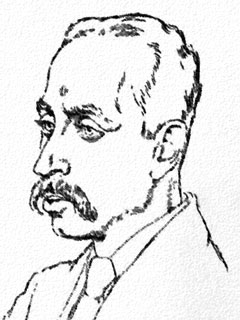The directory «Plots»
Rilke Rainer (Rene) Maria
(1875–1926)

German poet, b. Prague, the greatest lyric poet of modern Germany.
Rilke’s youth at military and business school was not happy. His relations with his father were difficult, and he was able to attend the Univ. of Prague only with the help of an uncle. Married only briefly at the turn of the century, Rilke preferred an unsettled, wandering life among literary people; he was greatly influenced by his travels, notably by trips to Russia (1899, 1900). The sculptor Rodin, a close friend of Rilke who briefly employed him as secretary (1905–6), shaped the poet’s career by introducing him to the craftsman’s approach to creativity. After extensive travel in Italy, North Africa, and elsewhere, Rilke returned to Paris (1913), but World War I drove him back to Germany, where war service and chronic ill health frustrated his work. After 1919 he lived at Castle Muzot, in Valais canton, Switzerland. His death from a blood disease was hastened by the prick of a rose thorn.
Rilke was sensitive and introspective. His poetic style was rich and supple, varying from the simple to the elaborate and profound. It is generally characterized by striking visual imagery, musicality, and a preponderant use of nouns. The erotic and spiritual love between men and women is a constant theme. In tone Rilke’s verse was often mystical and prophetic; he used symbolism as a means of expression and created poetry that bears a strong resemblance to medieval verse. This resemblance may reflect Rilke’s religious outlook—his probing into the emotional and spiritual issues involved in the search for goodness and transcendence in the absence of a personal God and his absorption with death as a poetic theme. Rilke was antimodern in many ways, an attitude particularly evident in his antipathy for large modern cities.
Rilke’s first book of poetry, Leben und Lieder [life and songs], appeared in 1894, but not until the stories of Geschichten vom lieben Gott (1904, tr. Stories of God, 1931) did his mature mysticism find expression. His visits to Russia inspired one of the three books of Das Stundenbuch (1905, tr. Poems from the Book of Hours, 1941), with which he achieved fame and in which he treated God as an evolutionary concept. His Neue Gedichte [new poems] (2 vol., 1964) are distinguished by the power and beauty of their verse, and critics often prefer them to Rilke’s own favorite verse, his Duineser Elegien (1923, tr. Duino Elegies, 1930, 1961), which are written in a purposely staccato style and contain his most positive praise of human existence. Rilke’s only novel was Die Aufzeichnungen des Malte Laurids Brigge (1910, tr., The Notebooks of Malte Laurids Brigge, 1964). He was a superb and prolific letter writer. Rilke’s reputation has ascended to great heights since his death. Most of his work has been translated.
Austria, 1976, Rainer Maria Rilke
German Federal Republic, 2000, Book Cover Design
Liechtenstein, 1993, Poem of Rilke
Nicaragua, 1995, Rainer Maria Rilke
Switzerland, 1979, Rainer Maria Rilke
German Federal Republic, 2000.11.09,  Bonn. Rainer Maria Rilke
Bonn. Rainer Maria Rilke